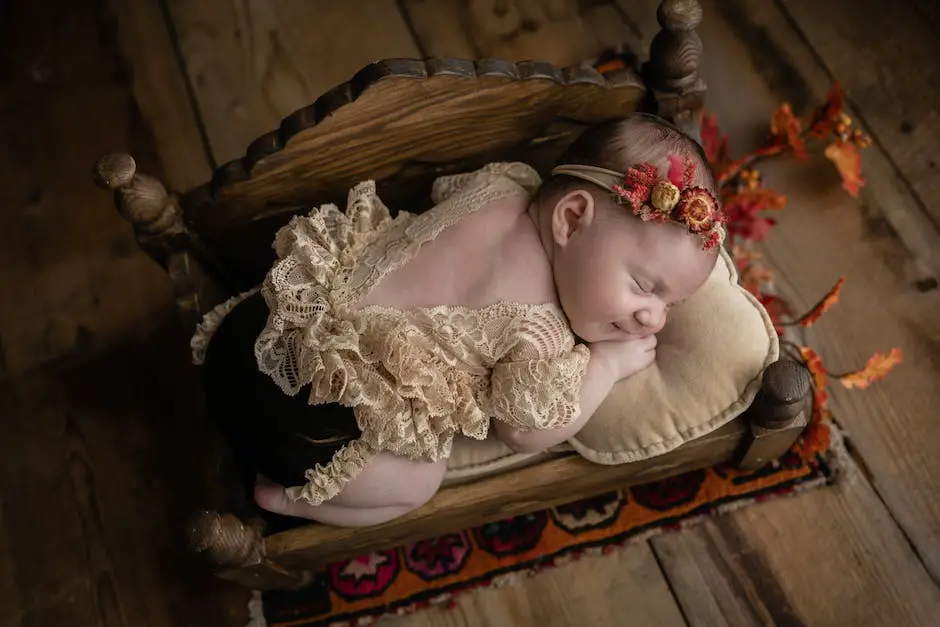Having a newborn baby can be as thrilling as it is perplexing, particularly when it comes to observing their varied sleep habits. One phenomenon most caregivers notice is the peculiar position babies adopt when sleeping, often involving their cute little butts up in the air. From child development, comfort, safety, to practical tips to encourage healthy sleep habits, there are many fascinating angles from which we can approach this subject. Let’s dive in and explore this memorable, often endearing, part of infancy and learn about the facets revolving around the sleeping patterns of babies, and what it means in the wider context of their growth and development.
The Sleeping Position Phenomenon
Ah, the fascinating world of baby sleep! Isn’t it precious watching your little one lay fast asleep? The way those tiny fingers clasp onto their comforter and the soft, rhythmic breathing is just the sweetest, most gratifying sight. But have you ever noticed certain patterns in their sleeping positions? Well, there are good reasons why they choose those snuggish postures that look so darn comfy!
First off, let’s talk about the most common, medical professionals recommended sleeping position – lying flat on their back. Known as the ‘supine position,’ this one’s a crowd-favorite with babies and heavily advocated by experts due to its notable role in reducing the risk of Sudden Infant Death Syndrome (SIDS). Infants naturally tend to fall into this position due to their limited mobility, and the orientation allows for unobstructed breathing during slumber. Plus, it provides a fantastic view of the world around them when they wake up!
On the other hand, some babies, especially as they grow and develop, might love taking on the ‘tummy time’ position for sleep. But be cautious! Although this posture strengthens their neck and arm muscles, it isn’t recommended for unsupervised sleep due to increased SIDS risk. Always remember to turn them onto their back if you notice this!
In short, while every baby’s sleep pattern is unique, that universal similarity lies in their innate tendency for safe, comfortable positions. They soothe themselves into the most peaceful slumber, while also ensuring they are safe, the way nature intended. Isn’t it simply amazing how even the simplest things can be a window into the world of your baby’s well-being and development?

Child Development and Sleep
Sleeping positions are undeniably linked to a baby’s developmental stage. As our little ones grow, they slowly start to explore different sleep positions, often signalling their progress towards the milestone of independent movement. For instance, from approximately 4 to 7 months, many babies begin to master rolling, starting from their backs to their bellies. This is an exciting achievement indeed! However, parents should still place babies on their back to sleep and let them find their own comfortable position. A baby rolling onto their belly independently demonstrates a capability to move, mitigating some risk from a prone sleeping position.
After crossing the 1-year milestone, kids show a propensity to sleep in a variety of positions. This emphasis on shifting sleeping positions is a positive sign, indicating the strengthening of their motor skills and body control. While some toddlers sleep soundly on their backs or bellies, others may even prefer a side sleeping position. These positions are safe since toddlers are more adept at moving, and the risk of SIDS decreases notably after the first year.
To conclude, monitoring baby’s sleep position provides more than just peace of mind while they snooze. Observing these nocturnal gymnastics can also offer telling insights into their physical development. Rejoice in these overnight acrobatics, as they are signs that our tiny tots are learning new skills and growing up so fast! Just remember to always follow safe sleep guidelines and consult with a healthcare professional if any concerns arise.

Comfort and Safety in Baby Sleep
Continuing the journey of parenting and discussing babies’ sleeping positions, it’s critical to understand how a child’s developmental stage influences their position during sleep. Certainly, the developmental milestone of rolling over, from back to belly, is a game changer when it comes to sleep safety. Around this developmental stage, babies often feel an enchanting new sense of freedom, which also comes with sleep safety risks in case a baby falls asleep in a less-safe prone position.
In order to mitigate the risks, a gold standard in baby sleep safety is placing babies on their back to sleep. This is because as babies master their motor skills, they often roll over onto their tummy unsupervised. Also, babies sleeping on their back is a globally accepted practice that drastically reduces the risk of Sudden Infant Death Syndrome.
As babies grow and morph into toddlers after their first year, their sleeping patterns and positions largely shift. Not only does this indicate increased motor skills and body control but is also a mesmerizing sign of growth and learning. Toddlers might experiment with side sleeping positions, which are generally safe at this stage, and yet this warrants vigilant monitoring.
Relentless monitoring of sleep positions can also bestow caregivers with invaluable insights into their baby’s physical development. Through these changes and milestones, parents are surely given a reason to rejoice! But amidst this celebration, let’s not forget the emphasis on following safe sleep guidelines and maintaining open communication with healthcare professionals. In the end, taking these vital steps is about nurturing a safe and healthy sleep environment for our little ones – a step towards giving them the best start possible.

Tips to Support Healthy Sleep Habits
A vital aspect of a baby’s healthy sleep habits that parents can influence is establishing a consistent bedtime routine. This practice not only encourages sufficient sleep but also fosters an essential sense of security in little ones. The routine can be made enriching and enjoyable with elements like soothing lullabies, warm baths, or a comforting bedtime story. These activities aid in winding down the baby and signaling that it’s time to sleep. Alongside, a predictable and tranquil sleep environment fosters good sleep. Keep the sleep environment dark, quiet, and cool. Use dim night lights if necessary, and if your baby seems disturbed by the silence, a white noise machine can work wonders.
Apart from this, parents can also influence their baby’s sleep quality by keeping a close eye on their daytime habits. Maintaining a fine balance between naps and active time during the day is integral. Remember, overly tired babies might find it harder to settle down at night. Hence, sensible nap times during the day can contribute to a more successful bedtime. Simultaneously, remember to ensure that the baby gets enough nutrition through the day, as their high energy requirements can lead to them waking up due to hunger in the night. Always consult a healthcare provider about the amount and type of food, especially when starting a baby on solids.
Importantly, every baby is different, and their sleep needs and ways will vary. What may work wonderfully for one baby may not be as effective for another. Here, patience, communication, and love come to play. Understand the baby’s cues, needs, and patterns. Relentlessly communicate with the baby, letting them feel secure and loved. And, most importantly, cherish the journey knowing that this too is a phase in their life that flies by, leaving behind many fond, albeit sleep-deprived, memories. Remember to look at every day of parenting as a wonderful adventure and every night as a time to fortify those precious bonds of love.

Indeed, the vision of a baby sleeping with their butt in the air is more than an adorable photo opportunity. It is a natural and evolutionary sleep position that caters to their development needs and comfort. As responsible caregivers, understanding this peculiar sleep habit arms us with the knowledge required to better navigate the infant’s sleep routines. Moreover, it equips us with the insight to ensure their safety whilst promoting healthy sleeping habits that are fundamental to their overall growth and wellbeing. Therefore, it’s crucial not only to celebrate these sweet moments but to fully comprehend what they signify in the larger view of child wellness.

As a mother of four very energetic children, Emilia knows how chaotic motherhood can be. She’s learned a lot of lessons along the journey so far and loves sharing the tips & tricks she’s picked up over the years with anybody else on the same life path.

